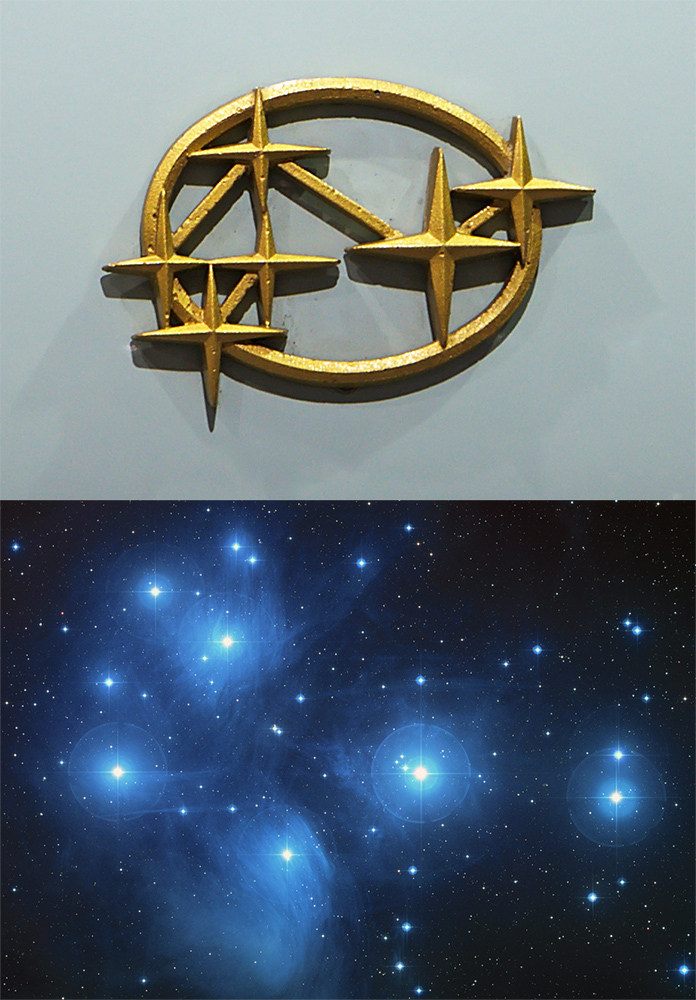The dormant volcano Mauna Kea is the highest point in the Central Pacific and of the Hawaiian Islands. At such a height, the benefits of dry air above the clouds with little to no light pollution make it the preeminent site in the world for astronomical observing. As such, many large telescopes operate at its summit. One of these is the Subaru telescope of the National Astronomical Observatory of Japan.

Subaru, you say? They sold naming rights of a telescope to a car company? Well, no. The car company and the telescope were both named for the open star cluster Subaru which graces the fall and winter skies of the Northern Hemisphere. The closest naked eye star cluster to Earth, the six bright stars of Subaru glow hot blue and are surrounded by beautiful nebulosity that can be seen with even the smallest binoculars or telescopes. This cluster has been clearly recorded in dozens of ancient cultures and even referenced in the bible. The oldest known depiction of the night sky is a bronze disc found in Germany that dates to around 1600 BCE and is believed to include the sun, moon, and the stars of the Subaru cluster.

Fast forward to 1953, when the Japanese businessman Kenji Kita combined six smaller companies across the manufacturing sector to create Fuji Heavy Industries, producing everything from scooters to cars to busses. Drawing from his love of the sky to constitute the combined six businesses he brought together, he named his first car the “Subaru 1500” with the logo a clear representation of the star cluster. Whoa, whoa, whoa. The brightest and best star cluster, most visible to the naked eye, with visible nebulosity, and you’ve never heard of it? That may be because Western culture traditionally uses ancient Greek and Roman names for the primary constellations, and we know “Subaru” as “The Pleiades”.
